

November 26 – December 2: “Which comes first, the reader or the story?”
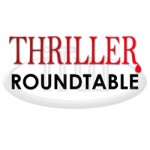 The reader or the story? Which comes first and why? This week we’re joined by ITW members Jon Land, G. A. Chamberlin, DiAnn Mills, Judy Penz Sheluk, Tom Pitts, Vicky Delany, Bruce Robert Coffin, Lynn Cahoon, Jay Gertzman and Roger Angle. Scroll down to the “comments” section to follow along!
The reader or the story? Which comes first and why? This week we’re joined by ITW members Jon Land, G. A. Chamberlin, DiAnn Mills, Judy Penz Sheluk, Tom Pitts, Vicky Delany, Bruce Robert Coffin, Lynn Cahoon, Jay Gertzman and Roger Angle. Scroll down to the “comments” section to follow along!
 Lynn Cahoon is the author of the NYT and USA Today best-selling Tourist Trap cozy mystery series. Guidebook to Murder, book 1 of the series, won the Reader’s Crown for Mystery Fiction. She also pens the Cat Latimer series available in mass market paperback with Slay in Character coming in late 2018. In addition to releasing Who Moved my Goat Cheese in March as part of the new Farm to Fork series, Killer Green Tomatoes released July 3rd, 2018.
Lynn Cahoon is the author of the NYT and USA Today best-selling Tourist Trap cozy mystery series. Guidebook to Murder, book 1 of the series, won the Reader’s Crown for Mystery Fiction. She also pens the Cat Latimer series available in mass market paperback with Slay in Character coming in late 2018. In addition to releasing Who Moved my Goat Cheese in March as part of the new Farm to Fork series, Killer Green Tomatoes released July 3rd, 2018.
 Jon Land is the award-winning, USA Today bestselling author of 45 books, including nine titles in the critically acclaimed Texas Ranger Caitlin Strong series, the most recent of which, STRONG TO THE BONE, won both the 2017 American Book Fest and 2018 International Book Award for Best Mystery. The next title in the series, STRONG AS STEEL, will be published in April. MANUSCRIPT FOR marks his second effort writing as Jessica Fletcher for the MURDER, SHE WROTE series.
Jon Land is the award-winning, USA Today bestselling author of 45 books, including nine titles in the critically acclaimed Texas Ranger Caitlin Strong series, the most recent of which, STRONG TO THE BONE, won both the 2017 American Book Fest and 2018 International Book Award for Best Mystery. The next title in the series, STRONG AS STEEL, will be published in April. MANUSCRIPT FOR marks his second effort writing as Jessica Fletcher for the MURDER, SHE WROTE series.
 Roger Angle writes novels and short fiction but started out life as a poet. He has published more than 20 poems and short prose pieces in literary journals, in addition to thousands of newspaper stories and dozens of magazine articles. He was nominated for a Pulitzer Prize as a reporter in 1967 and won the Random House short fiction contest in 1999 with “Casualty of War” about a narcissist in a relationship. Recent publications include a comic thriller “The Hit-Man” in Murder at the Beach, published by Down & Out Books in 2014. THE DISAPPEARANCE OF MAGGIE COLLINS is his first published novel. Angle lives in Southern California.
Roger Angle writes novels and short fiction but started out life as a poet. He has published more than 20 poems and short prose pieces in literary journals, in addition to thousands of newspaper stories and dozens of magazine articles. He was nominated for a Pulitzer Prize as a reporter in 1967 and won the Random House short fiction contest in 1999 with “Casualty of War” about a narcissist in a relationship. Recent publications include a comic thriller “The Hit-Man” in Murder at the Beach, published by Down & Out Books in 2014. THE DISAPPEARANCE OF MAGGIE COLLINS is his first published novel. Angle lives in Southern California.
 Bruce Robert Coffin is the bestselling author of the Detective Byron mystery series and former detective sergeant with more than twenty-seven years in law enforcement. At the time of his retirement from the Portland, Maine police department, he supervised all homicide and violent crime investigations for Maine’s largest city. Following the terror attacks of September 11th, Bruce spent four years working counter-terrorism with the FBI, earning the Director’s Award, the highest honor a non-agent can receive. His short fiction appears in several anthologies, including The Best American Mystery Stories 2016.
Bruce Robert Coffin is the bestselling author of the Detective Byron mystery series and former detective sergeant with more than twenty-seven years in law enforcement. At the time of his retirement from the Portland, Maine police department, he supervised all homicide and violent crime investigations for Maine’s largest city. Following the terror attacks of September 11th, Bruce spent four years working counter-terrorism with the FBI, earning the Director’s Award, the highest honor a non-agent can receive. His short fiction appears in several anthologies, including The Best American Mystery Stories 2016.
 DiAnn Mills is a bestselling author who believes her readers should expect an adventure. She creates action-packed, suspense-filled novels to thrill readers. Her titles have appeared on the CBA and ECPA bestseller lists; won two Christy Awards; and been finalists for the RITA, Daphne Du Maurier, Inspirational Readers’ Choice, and Carol award contests. She is co-director of the Blue Ridge Mountains Christian Writer’s Conference and Mountainside Marketing Conference
DiAnn Mills is a bestselling author who believes her readers should expect an adventure. She creates action-packed, suspense-filled novels to thrill readers. Her titles have appeared on the CBA and ECPA bestseller lists; won two Christy Awards; and been finalists for the RITA, Daphne Du Maurier, Inspirational Readers’ Choice, and Carol award contests. She is co-director of the Blue Ridge Mountains Christian Writer’s Conference and Mountainside Marketing Conference
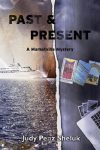 Judy Penz Sheluk is the Amazon international bestselling author of the Glass Dolphin Mysteries and the Marketville Mysteries. Her short stories appear in several collections. Judy is also a member of Sisters in Crime International, Sisters in Crime – Guppies, Sisters in Crime – Toronto, International Thriller Writers, Inc., the South Simcoe Arts Council, the Short Mystery Fiction Society, and Crime Writers of Canada, where she serves on the Board of Directors, representing Toronto/Southwestern Ontario.
Judy Penz Sheluk is the Amazon international bestselling author of the Glass Dolphin Mysteries and the Marketville Mysteries. Her short stories appear in several collections. Judy is also a member of Sisters in Crime International, Sisters in Crime – Guppies, Sisters in Crime – Toronto, International Thriller Writers, Inc., the South Simcoe Arts Council, the Short Mystery Fiction Society, and Crime Writers of Canada, where she serves on the Board of Directors, representing Toronto/Southwestern Ontario.
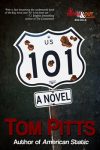 Tom Pitts received his education on the streets of San Francisco. He remains there, working, writing, and trying to survive. He is the author of American Static, Hustle, and the novellas Piggyback and Knuckleball.
Tom Pitts received his education on the streets of San Francisco. He remains there, working, writing, and trying to survive. He is the author of American Static, Hustle, and the novellas Piggyback and Knuckleball.
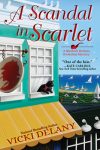 Vicki Delany is one of Canada’s most prolific and varied crime writers and a national bestseller in the U.S. She has written more than twenty-five books: clever cozies to Gothic thrillers to gritty police procedurals, to historical fiction and novellas for adult literacy. She is the author of the Sherlock Holmes Bookshop cozy mystery series, from Crooked Lane books, featuring Gemma Doyle, an Englishwoman with a mind much like that of the Great Detective, who owns a Holmes-themed bookshop on Cape Cod. She also writes the Year Round Christmas series for Penguin Random House and, under the pen name of Eva Gates, the Lighthouse Library series for Crooked Lane Books. Vicki lives and writes in bucolic Prince Edward County, Ontario. She is the past president of the Crime Writers of Canada. Her work has been nominated for the Derringer, the Bony Blithe, the Ontario Library Association Golden Oak, and the Arthur Ellis Awards.
Vicki Delany is one of Canada’s most prolific and varied crime writers and a national bestseller in the U.S. She has written more than twenty-five books: clever cozies to Gothic thrillers to gritty police procedurals, to historical fiction and novellas for adult literacy. She is the author of the Sherlock Holmes Bookshop cozy mystery series, from Crooked Lane books, featuring Gemma Doyle, an Englishwoman with a mind much like that of the Great Detective, who owns a Holmes-themed bookshop on Cape Cod. She also writes the Year Round Christmas series for Penguin Random House and, under the pen name of Eva Gates, the Lighthouse Library series for Crooked Lane Books. Vicki lives and writes in bucolic Prince Edward County, Ontario. She is the past president of the Crime Writers of Canada. Her work has been nominated for the Derringer, the Bony Blithe, the Ontario Library Association Golden Oak, and the Arthur Ellis Awards.
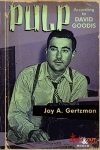 Jay Gertzman has spent half a lifetime thinking about the distinctions between “art” or “literature” and popular entertainment. From what have artists graduated when their erotica or thrillers are published by Penguin or Vintage or produced by Paramount? Gertzman has published books on the distribution and censorship of erotica in the 1920s and ’30s, and on the poet and pornographer Samuel Roth. His Pulp According to David Goodis was published on October 29.
Jay Gertzman has spent half a lifetime thinking about the distinctions between “art” or “literature” and popular entertainment. From what have artists graduated when their erotica or thrillers are published by Penguin or Vintage or produced by Paramount? Gertzman has published books on the distribution and censorship of erotica in the 1920s and ’30s, and on the poet and pornographer Samuel Roth. His Pulp According to David Goodis was published on October 29.
 G. A. Chamberlin is the author of the Amanda Wells Series of thrillers under the imprint Crown Eagle Publishing. Her latest, The Kneeling Woman, is her ninth in the series. She is an indie-published author under the imprint, where she also wrote one non-fiction title, Kathleen The War Years — a scholarly account of U.S. overseas diplomacy during WWII.
G. A. Chamberlin is the author of the Amanda Wells Series of thrillers under the imprint Crown Eagle Publishing. Her latest, The Kneeling Woman, is her ninth in the series. She is an indie-published author under the imprint, where she also wrote one non-fiction title, Kathleen The War Years — a scholarly account of U.S. overseas diplomacy during WWII.
- LAST GIRL MISSING with K.L. Murphy - July 25, 2024
- CHILD OF DUST with Yigal Zur - July 25, 2024
- THE RAVENWOOD CONSPIRACY with Michael Siverling - July 19, 2024
